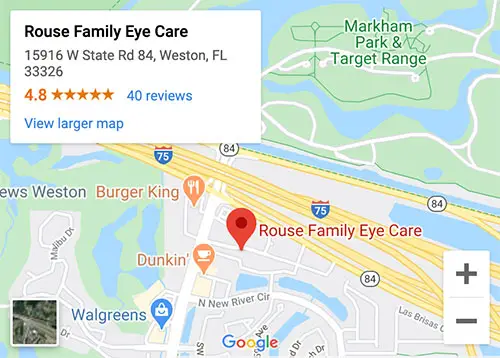Prescription eyeglasses help improve vision for the vast majority of adults. About 75 percent of American adults use some form of vision correction, according to The Vision Council, and nearly two out of three of them currently wear prescription eyeglasses.
Light carries visual information into the eye. The clear outer covering of the eye bends the light so that the light strikes a precise point on the light sensitive tissue at the back of the eye, known as the retina. Imperfections in the shape of your eye can cause the light to bend incorrectly, and hit the wrong part of the retina, resulting in nearsightedness, farsightedness and astigmatism. Doctors refer to these eye problems as refractive errors because they occur when the eye cannot bend, or refract, light correctly.
Eyeglasses can correct nearsightedness, farsightedness and astigmatism by bending the light correctly before it hits your retina. Nearsightedness, or myopia, means that you cannot see far away objects clearly. It occurs when your eyeball is shorter than normal, which prevents the light from focusing before it hits your retina. Farsightedness, or hyperopia, means you cannot see nearby objects clearly. It occurs when your eyeball is too long, which causes the light to focus before it strikes your retina. Astigmatism means there is a blurry area in the field of vision.
Types of Prescription Eyeglasses
Doctors describe the strength of eyeglass lenses in terms of power, or the amount of correction necessary to improve the focusing power of your eyes.
Single vision
Single vision lenses have the same power across the entire lens, from top to bottom. An eye doctor may prescribe single vision lenses for nearsightedness, farsightedness, and astigmatism. Single vision lenses are the most commonly prescribed type of eyeglasses.
Bifocal lenses
Bifocal lenses have two powers in one lens. The power on the top section of the lens improves distance vision and the power on the bottom section of the lens improves near vision.
Bifocal lenses are convenient, in that one pair of bifocal lens eyeglasses provide near and far vision without having to change eyeglasses. The line separating the two sections creates drastic changes in vision correction as you move your eyes from one section to another; it can take time to get used to using bifocal lenses.
Trifocal lenses
Trifocal lenses have three powers: distance, intermediate and near. The power on the top section improves distance, the power on the bottom section improves near vision, and the power in the middle improves mid-range vision. The mid-range section helps you see computer screens and car dashboards, for example.
Like bifocal lenses, trifocal lenses are convenient, but the line separating the sections can be distracting.
Progressive lenses
Progressive lenses perform the same vision-correcting jobs as bifocals and trifocals, but without the dividing lines between the sections on the lens. This makes the transition between near, distance and intermediate correction much smoother. The downside to progressive lenses is that the “progressive” part of the lens takes up space, thereby shrinking the actual visual field of the distance, intermediate and near power sections.
Computer lenses
Working on a computer can cause blurred vision, eyestrain, red eyes and other symptoms related to computer vision syndrome. The visual demands of working on a computer can make it hard for your eyes to remain focused on the computer screen. Looking back and forth between your keyboard and the screen can also be challenging for your eyes. This is especially true if you are over the age of 40 and have presbyopia, a normal age-related loss of near focusing ability. Computer glasses help your eyes focus on a computer screen, which typically sit 20 to 26 inches from the user’s eyes.
For more information on eyeglasses, contact Rouse Family Eye Care. Our one-on-one approach to optometry makes our doctors and the Rouse Family Eye Care staff the vision care and eyeglasses providers of choice in the Weston area.

954-384-6200
